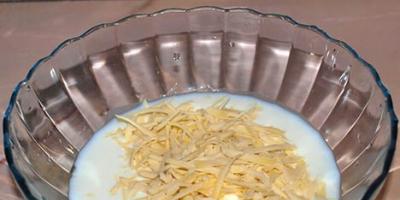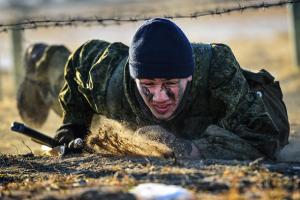In private housing construction, no one will pour concrete into the formwork if there is water in the pit or trench. Level groundwater– one of the main indicators of concrete work. But in industrial construction, underwater concreting is a normal construction operation. After all, it is necessary to somehow build piers, breakwaters and other hydraulic structures.
Currently, builders use two technologies for pouring concrete under water:
- Using piles.
- Caisson option.
Pile method
For this purpose, special piles are usually used, which are driven into the bottom of the reservoir. At the same time, the piles themselves are reinforced concrete pillars, which are connected to each other by a tongue-and-groove lock. Such locks are used to connect tongue-and-groove floorboards, laminate and other building materials. Therefore, the piles are called sheet piles.
The lock does not create a seal, so water freely penetrates into the formwork through it. But this does not prevent concreting from being done under water. Because in this construction process a special type of concrete is used, and it is, so to speak, semi-finished.
How to properly prepare concrete mortar
For these purposes, two types of solution are prepared: saturated and unsaturated. They differ from each other in recipe. Unsaturated concrete is made from 6 volumes of crushed stone and 1 volume of cement. Saturated consists of 7 volumes of crushed stone and 2 volumes of Portland cement.
The most important thing is that both types must be exposed to air to harden slightly. This is the only way to avoid erosion of the mixture, which leads to high material consumption.
The first solution should be kept in air for 5 hours, the second 3 hours. Please note that the concrete should not lie in the sun, so it is placed under a canopy and covered with a tarp. By the way, wind also reduces its quality characteristics.
Fill rules
Why are there two types? They have different strengths. Saturated concrete is denser and stronger, so it is laid near the formwork. But the core of the structure is poured from the unsaturated type.
There is one very subtle point in this whole matter. It is clear that it will not be possible to pour the entire concrete structure at once. Pouring concrete into water is a step-by-step process. Therefore, you will have to strictly control two construction procedures: mixing the concrete solution and pouring it into the formwork.

It is necessary to ensure that the solution that is poured first is still in a semi-liquid state, that is, it has not yet completely hardened. Because the mixture poured on top of it should adhere well to it.
If the lower layer has already turned into stone, then the upper one will lie on it as if on a solid foundation. The solidity of the structure will be broken. Any vibration will create stress along the joint layer. The minimum is a crack that will grow all the time. Maximum – instantaneous fracture of the structure.
Preparatory work
You can’t just carry out concreting in water without first preparatory work. What does this stage involve?
Firstly, it is necessary to examine the bottom of the reservoir where concreting will be done. It must be durable and free of stone inclusions. If there are stones at the bottom, then the area fenced with piles must be filled with crushed stone so that the stones are hidden in its layer.
Secondly, leakage of concrete mortar may occur even through the crushed stone layer. So the bottom is covered thick fabric. This can be canvas or tarpaulin. Please note that the fabric is laid in such a way that it can also cover part of the formwork. That is, a kind of trough should form.
This technology is used in places where there is no large current or strong waves.
Caisson method
This option for underwater concreting is used in cases where there is a strong undercurrent in the reservoir and waves are always present. Therefore, the main emphasis is on the construction of formwork. It is usually made of metal.
There are two options here, which differ from each other in the type of formwork. If a small area is being concreted, then you can install a ready-made structure by lowering it to the bottom using a crane. If it is necessary to carry out concrete work over a large area, then a caisson is assembled.
Installation of formwork
To do this, a trench or pit is dug at the bottom, which is filled with bags (bags) of concrete mortar. This will be the bottom new design. The solution in the bags will harden and turn into a monolith.
After that, metal piles are installed along the entire perimeter, which are sheathed from the inside or wooden planks 50 mm thick, or metal sheets 8-10 mm thick. Please note that the piles are installed with a slight slope towards the outside. This is done with one single purpose - to create slopes for a pit or trench.

In this case, the piles are tightened together with special metal rods, which will create rigidity of the entire structure. And in order to ensure that the slope of the piles is not disturbed, they are attached to the bottom of the reservoir using cables and anchors. In general, you cannot assemble such a structure with your own hands. This requires special equipment with personnel and a lot of time.
How concrete solution is poured
Since this option is used for deep-sea structures, underwater concreting is carried out according to special pipes. Valves are installed at both ends. The top one opens when the solution is fed into the device. Then it closes and the lower valve opens, through which concrete is delivered to its destination.
In this case, a certain pressure is created inside the pipe, under the influence of which the mixture is squeezed out, filling the required area. In this way it is possible to carry out work at a depth of 30 m.
As you can see, it is possible to carry out concreting in water. But this applies to industrial construction. It was already mentioned at the beginning that rarely do any private developers dare to carry out concrete work in water with their own hands. Although such technologies exist.
Work with concrete in water for private housing construction
There are several options that can be used in private housing construction.
The simplest option is to use bags of concrete mortar like a caisson type. You make a saturated solution, fill bags with it and lower them into the prepared trench or pit. Fill above the groundwater level.
But here the question arises: will concrete harden in water? Don’t even doubt it, it will definitely freeze. Anyone who has already dealt with concrete work knows that any concrete structure must be watered to give it the necessary strength. Lack of moisture reduces quality characteristics.

In this state, bags of solution should remain for at least a month. After which the formwork is installed and, for example, the foundation is poured using classical technology.
Capillary technology
It's more difficult option, it is called an ascending solution. The whole essence of this technology is that liquid concrete mortar, made on the basis of cement and sand (an aqueous solution of cement with and without plasticizers is often used), is fed into a pre-prepared cushion. It's done like this.
Firstly, a trench or pit is dug, where they are installed evenly over the area. metal pipes with a diameter of 40-100 mm. Secondly, crushed stone is backfilled above the groundwater level. Please note that in this case different fractions of material are used. You can simply mix them.
Now cement mortar is poured through the pipes, which will fill the space between the elements of the crushed stone layer. When filling gradually, the pipes are raised so that the solution evenly fills the entire space of the future foundation.
The complexity of the entire construction operation lies in the fact that for its implementation it will be necessary to use crane. But this is not the most difficult thing. It is important here to control the supply of solution. And since the pipes will rise higher and higher, you will have to build a pedestal or any other structure that would rise above the construction site. It's good if this design will be mobile. This will make it easier to move.
Water is an important component for the preparation of mortars for the construction of structures and finishing. It is no secret that not any liquid is suitable for mixing cement, but one that meets certain requirements. We will tell you what water should be like for concrete and mortars and why you should not use liquid from any water tap.
Source selection problem
Concrete and other cement-based mortars are durable finished product or coverings. This property is provided by a special structure that is formed as a result of hydration and chemical reactions components of the mixture with each other. The characteristics of the material are influenced by the mineralogical composition of the solution, which is selected carefully.
The influence of water on the grade of concrete cannot be underestimated - liquid can both contribute to the acquisition of strength and other design parameters, and significantly reduce them due to the presence of such components in the composition:
- Water with minerals in excess or insufficient quantities can reduce the hardening rate, the final strength, and prevent the formation of molecular bonds in the structure of the stone.
- Organic contaminants (silt, moldy fungi) harm concrete actually and in the future: they prevent mineral components from reacting and crystallizing qualitatively; over time, in a humid environment, organic matter develops and destroys the product throughout its entire volume.
Accordingly, you can only use water that meets state standards, that is, from water supply systems, but tested in a laboratory: unfortunately, really good liquid rarely reaches the consumer due to the poor condition of the wire lines. The same applies to washing fillers and watering young hardening concrete.
Standard
The quality of water for concrete and mortars is regulated by special GOST 23732-2011 “Water for concrete and mortars. Specifications" The document establishes restrictions on the presence of minerals and chemical compounds in the environment (Table 1 of GOST):

GOST describes in detail what kind of water is for concrete, as well as the criteria for assessing its quality during preliminary tests (Table 3 of this standard):

If there is a convenient source of water supply, before using the resource, a mandatory analysis is carried out and the obtained indicators are compared with the values from the table. No. 3. If they comply, water enters the work for mixing concrete and cement-based products.
The influence of chemical compounds on the quality of concrete
There is a lot of water in concrete - from 155 liters per 1 m 3, depending on the fraction of crushed stone, sand, and the expected brand of stone. The liquid interacts with every grain of sand and dust of cement, so its quality affects the entire volume of the future structure. How do chemical compounds in water affect the properties of concrete if the established GOST standards are neglected?
- Sugars and phenols delay the hardening of concrete and greatly impair its quality. The normalized content of these substances is 10 ml/liter;
- Petroleum products form a waterproof film on binder particles;
- Surfactants (soap residue) also coat the components. Unlike improvers, they only slow down hardening;
- Soluble salts of sulfate ions and chlorine ions crystallize in the pores of concrete, leading to corrosion of stone and reinforcement. For this reason, using sea water is strictly prohibited.
Sewage, swamp and river waters can be used for mixing concrete and cement, but only after cleaning and inspection by the sanitary-epidemiological station.
Amount of water
The summary table shows the technological water consumption per cubic meter during concrete production:

What determines the water consumption in concrete:
- Sand and crushed stone fraction;
- Brand of cement and its type;
- Expected grade of concrete.
The volume of water in concrete should not exceed the norm - in pursuit of plasticity, you can easily lose quality, excess liquid inhibits the hydration of cement, and concrete will not gain the expected strength. Accordingly, you cannot add it in excess of the norm when kneading.
If the water content of the concrete solution is too low, it will not allow the components to be mixed properly, and its plasticity will be minimal.
ContentTo obtain concrete with good plasticity and workability, use special plasticizers!
Underwater concreting is a special technology for laying concrete mortar, used when it is not possible to pump out water or remove it by other means. Most often, the method is in demand for the construction of large reinforced concrete structures, the operation of which involves significant loads. Bridges, dams, other hydraulic structures, as well as power line supports, wells in rock are structures during the construction of which in many cases they resort to underwater concreting.
Concreting in water is also used in projects of lesser scale. Inability to establish drainage from the pit when high level groundwater is a common situation during construction work.
There are several methods for pouring concrete into water:
- “vertically moving pipe” (VPT) technology;
- VR or concreting, due to the ascension of the solution;
- tamping concrete mixture;
- laying concrete in bunkers;
- bagging method.
The main thing to remember when carrying out concrete-laying work is that the main calculated mass of the solution should not come into contact with water in order to avoid washing out the cement; the concreting process must proceed continuously until the level planned by the project is reached.
Preparatory work

Before you begin laying concrete directly into the water, you need to draw up a project describing the order and progress of the work, the volumes of material, necessary equipment and equipment. As a rule, at significant depths, divers are required to outline a plan for clearing the concrete area or clear it manually, install the formwork, and regulate the placement of pipes and hoses through which the pouring mixture flows.
The concrete solution is prepared at the factory in accordance with a certain recipe. For different methods involving pouring into water, the grade of concrete should be 10-20% higher than if laying was carried out under normal conditions; in this case, it is necessary to reduce the ratio of water and cement in the finished solution. Water slows down the hardening process, so it is advisable to introduce accelerators and plasticizers. Anti-erosion additives increase the resistance of structures to erosion.
Special requirements are also imposed on formwork. She must be:
- impermeable to the concrete mixture, including at joints;
- holds its shape well despite the water pressure;
- easy to install.
From the outside, the formwork is additionally reinforced with stone or sandbags.
Vertical pipe method
To fill in this way you will need:
- concrete pumps or other equipment that provides continuous supply of solution;
- concrete pipes with a diameter of 200-300 mm, consisting of links up to 1 m long, equipped with quick-release locks;
- equipment of the platform above the concreting site: traverse, winch, lifting mechanism.

The pipe is installed vertically, in contact with the lower point of concreting, while a small gap is allowed between the bottom and the edge of the pipe. A floating wad, such as burlap or a wooden plug, is placed inside, which is subsequently pressed through with liquid concrete and displaces water and air. In more technologically advanced options, the ends of the pipe are equipped with valves that open after the entire pipe is filled with concrete. The solution is fed through a funnel until the layer of laid concrete reaches a height of 0.8-1.5 m from the bottom edge of the pipe.
After this, the pipe is raised by one link, the upper element is dismantled, and the lower end must remain in the concrete. Filling continues until the required volume. It is worth noting that using one pipe you can pour an element with a radius of 6 m, therefore, if the concreting area is larger, you should use a system of concrete pipes with a pitch of 10-11 m.
How to pour concrete using the ascending solution method (BP)
The method involves preliminary filling of the concreted object with stone or crushed stone so that the voids make up 45% of the volume. Concrete solution is supplied through pipes of small diameter 37-100 mm, which, rising upward, naturally fills the voids in the backfill, completely displacing water. The area that can be filled using one pipe is determined by the radius of distribution of the mixture: R = 3 m when feeding the solution into a stone fill, 2 m into a crushed stone fill. Two filling methods are used: pressure and non-pressure.
Pressure or injection method BP
Pipes are installed directly into rock or crushed stone riprap. The cement mortar is supplied under pressure to the base of the fill, then rises, ensuring a monolithic setting with the aggregate. After completion of the work, the pipes remain in the concrete block, the excess is cut off.
Non-pressure or gravity method
It is implemented using a device in the stone backfill of a mine, the walls of which are a permeable lattice. The pipe moves inside this shaft, which makes this method similar to the VPT method. The concrete solution spreads under its own weight, and the pipe links are dismantled one by one.
Laying concrete at shallow depths
The described methods have become widespread when forming concrete structures at a considerable depth, up to 50 m. Is it possible to pour concrete using simpler and less expensive methods if the depth does not exceed 2 m, and the work itself is aimed at repairing existing monolithic structures? Indeed, to restore the integrity of a damaged structure, level the bottom or fill a non-critical object, there is a method of laying concrete in bags.
Bags filled with fresh solution and sewn up are placed on the base or sealed into large cavities of damaged structures. Burlap allows water to pass through, but protects the concrete from spreading. When concreting a large space, the bags are sewn together and reinforced.

Another method of underwater concreting at a depth of up to 1.5-2 m is the island or tamping method. The method requires a high feed rate cement mortar and the use of a vibrator for compacting the next portion of concrete, however, allows concreting of non-horizontal surfaces (for example, banks). In addition, no reinforcement is required and there are no high requirements for the class of concrete.
When pouring concrete into water, you must remember that this is a technologically complex process that requires careful preparation, drawing up project documentation and compliance with building codes. Accurate adherence to installation technology will allow you to avoid emergency situations both during the process of underwater concreting and during the subsequent operation of objects.
Some buildings or structures cannot be built on the ground. When constructing a hydroelectric power station, construction in water cannot be avoided. But will concrete harden in water?
In this article we will tell you how concrete is poured into water and how to build a strong building even in the most unsuitable conditions.
Concreting in water: principles and characteristics
Water is not a hindrance when constructing a concrete building. However, there is the necessary conditions, without which the concrete will not harden - for example, the foundation must be completely dry so that it does not wash away over time.
There are two ways to concrete a building in water:
at shallow depths, where there are no ebbs and flows, and the current is relatively stable, concrete can be poured by lowering the concrete mixture through a funnel into cavities enclosed by bridge piles. Or directly pour concrete into water;
To place concrete at great depths with strong currents, it is necessary to use caissons. It is best to place the concrete mass into the caissons not manually, but using concrete pumps.
Let's look at these methods of pouring concrete under water in more detail.
Mold for pouring concrete: pile method
In the place where it will be necessary to erect the necessary structure, sheet piles are installed. Thanks to this, you can skip the stage of drainage work. After you are sure that the piles are fastened tightly enough, concrete is poured into them through a funnel.
Pay attention to the preparation of the concrete solution. In order for concrete to lay well, it must be allowed to harden a little. If it becomes sufficiently viscous, it will not be washed away by the current and will fit tightly into the piles.
Concreting in water
At the site where they plan to build a building in the future, two ditches must be dug using dredging machines. Half-hardened concrete must be poured into these ditches, directly into the water. The result will be two shafts that will allow the structure to reach low water currents.
After this, iron piles are driven into the shafts, which will hold this structure. The piles must be fastened together with iron rods. To keep them in place, you need to attach them with steel cable to the dead anchors.
Concreting in water - important stage in the construction of hydraulic structures. If you need advice, they will be happy to help you create a high-quality and strong structure, even under water.
Concreting in water is used both in construction hydraulic structures(breakwaters, bridge supports, piers, berths, etc.), and in private low-rise construction in conditions of high groundwater.
Is it possible to pour concrete mortar into water?
The answer is positive: “Yes! Not only is it possible and necessary!” On this moment There are currently four technologies for pouring concrete into water:
- "Rising pipe" technology;
- Caisson method;
- Concreting using bags filled with mortar;
The first two options are used in industrial construction. The latter method is usually used in private low-rise construction.
Up-pipe technology
IN general case The following equipment and materials will be required:
- Concrete mixture (two types);
- Pile platform (flooring above the platform);
- Lifting device: floating crane, hoist or winch;
- Pipes;
- Traverse;
- Formwork for fencing confined space object of concreting from the water of a reservoir;
- Hopper.
The “rising pipe” method (pile method) allows the construction of durable concrete structures in water at shallow depths. A work platform is erected on the surface of the reservoir directly above the structure under construction, on piles driven into the bottom.
A traverse is installed on the platform, from which a supply pipe with a diameter of at least 200 millimeters is suspended. In this case, the pipes are lowered and raised using a hoist or winch.
The ideal option is to lift and lower using a floating crane, and supply concrete using a concrete pump. Depending on the dimensions of the structure being built, there may be several loading pipes.
Is it possible to pour concrete into water without preparatory work? In no case. Before pouring begins, the bottom of the proposed structure is covered with thick fabric (canvas or tarpaulin) overlapping the formwork and leveled with stone and crushed stone filling. This is done to avoid concrete leakage through changes in the topography of the bottom of the reservoir.
Two types of concrete are used for pouring: “saturated” and “unsaturated”. The first is laid around the perimeter of the formwork, and the second is poured into the core of the structure. Moreover, before pouring, both types of concrete must be kept in the air, in the shade for 5 and 3 hours, respectively.
The actual filling process is as follows. The pipe sinks to the bottom of the reservoir. Concrete is fed into the pipe until the entire pipe space is filled. Next, using a lifting device, they begin to lift the pipe - the concrete is unloaded to the bottom of the reservoir. The layer-by-layer pouring process is repeated until the entire structure is filled.
Important! Care should be taken that each lower layer of concrete does not turn into stone and is in a semi-liquid state. In addition, this method of underwater concreting is possible in reservoirs where there are no strong currents or significant waves.
Caisson method
The following equipment and materials will be required: materials:
- Concrete mixture in bags for the base;
- Concrete mixture for pouring;
- Caisson (formwork);
- Floating crane;
- Filling pipes with two valves;
- Feeding device (concrete pump);
- Anchors with cables
This method is used for deep-sea concreting (up to 30-50 meters), with strong underwater currents or strong waves. This requires the construction of sufficiently strong formwork. For small volumes of reinforced concrete products, a steel welded structure (caisson) is used as formwork, which is lowered to the bottom using a floating crane.
If you plan to fill a large object, proceed as follows:
- At the bottom of the reservoir, a trench or pit is torn off according to the size of the structure;
- The recess is filled with bags filled with concrete - the foundation of the future object;
- Steel piles are driven into the bottom of the reservoir along the perimeter of the base. In this case, the piles are installed with a slight slope towards the outer side of the object to create slopes;
- To avoid breaking the slope, the piles are secured to the bottom using cables and anchors;
- The inner surface between the piles is sheathed with boards no less than 50 mm thick, or steel sheets no less than 10 mm thick;
- The outer surface between the piles is reinforced with belts made of steel rods, angles or channels.
To make deep-sea concreting possible, the solution must be supplied to the pipes under overpressure. This requirement is ensured by the presence of two valves at the ends of the supply pipe and the supply of concrete by a concrete pump. In all other respects, the technology of caisson underwater concreting is similar to pile concreting
Underwater concreting with cement bags
Bags filled with concrete mortar are used, similar to the type of base construction for caisson concreting. A saturated concrete solution is mixed and filled into pre-prepared bags. Next, a trench or pit is filled with bags of liquid solution (above the level of nearby groundwater).
The structure is maintained for at least 30 days, after which formwork is erected around the object and pouring (of the foundation or walls) is carried out using classical technology.








